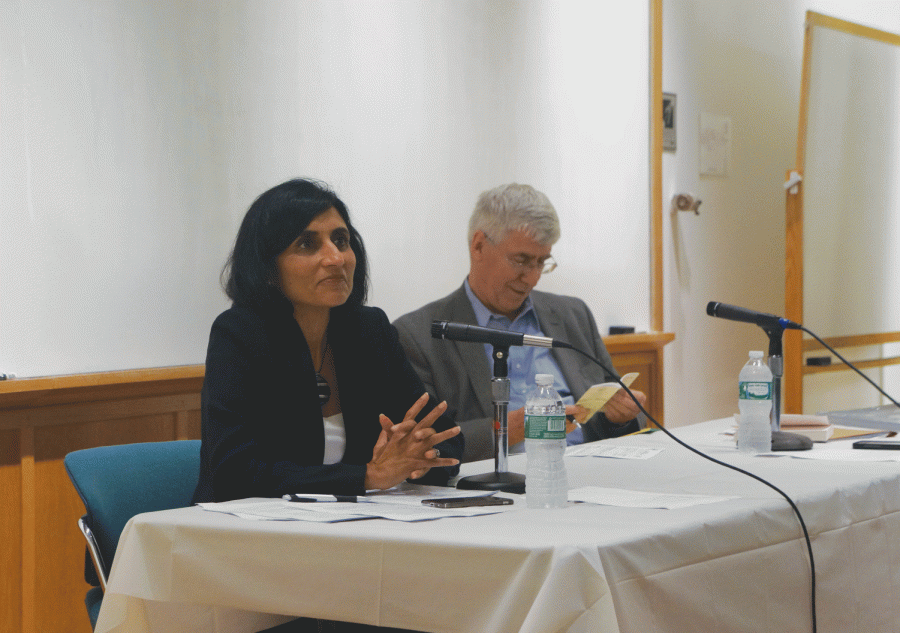Debating the First Amendment Right to Free Speech
Public policy analyst Shikya Dalmia and New York University Law Professor Jeremy Waldron debate freedom of speech on college campuses.
Colgate hosted its annual Constitutional Debate in Persson Auditorium Tuesday, September 20. This year, the debate commemorated the 229th “birthday” of the American Constitution. The debate, titled “Hate Speech vs. Free Speech: Where to Draw the Line?” focused on the First Amendment right to freedom of speech. The resulting dialogue concerned free speech and hate speech on contemporary college campuses. Professor at New York University Law School Jeremy Waldron and Reason Foundation senior analyst Shikha Dalmia took opposing sides in the debate as guest lecturers. The Reason Foundation is a prominent public policy think tank. The event was sponsored by the Program in Constitutional Government and the Center for Freedom and
Western Civilization.
The two participants hold opposing views on speech on college campuses. Waldron argued for the introduction of trigger warnings and limitations on hate speech, while Dalmia advocated for complete freedom of speech.
The United States is one of the few countries that refuses to ban hate speech.
Dalmia supports this stance, based on her interpretation of the First Amendment.
During his opening remarks, Waldron drew a distinction between offensive ideas and hate speech.
“Offense is not the thing to focus on,” Waldron said. “Hate speech is designed to stir up antagonism, leading to a clear and present danger.”
Waldron recognized that small examples of hate speech towards minority groups can culminate into larger issues.
“There are such things as slow-acting poisons, and by the time a clear and present danger of serious conflict has become apparent, the damage might have been done,” Waldron said.
While Dalmia recognized the strength of Waldron’s argument, she took a very different approach to focusing on the issue of censorship.
“Colleges depend on free speech more than any other institution in society, so one would expect that they would be protective of that,” Dalmia said.
An integral part of Dalmia’s argument concerned the negative effects that censorship and trigger warnings have on college education. In her view, trigger warnings hinder free speech. Dalmia argued that, by accepting free speech and by pushing themselves to unpack controversial beliefs, students grow intellectually and morally.
“Trigger warnings have created such a chilling environment where junior, untenured faculty in particular, have taken to omitting any controversial material from their course,” Dalmia said.
Waldron disagrees with Dalmia’s views on trigger warnings, as he believes that they do not hinder free speech and individual expression.
“Every time I watch a movie on TV or at the cinema, it begins saying ‘ [contains] danger, adult language, sex scenes, drug use,’” Waldron said. “Those are trigger warnings. We take them for granted, and I don’t think it’s inappropriate for an instructor to say to a class that includes 50 percent women, some proportion of whom may have suffered [from] sexual assault, to be advised when you read this material because it contains disturbing passages of assault. It doesn’t do any harm to free speech.”
Junior Rahil Uppal embraced the importance of discussing freedom of speech
on campus.
“I thought it was immensely relevant that we have this discussion,” Uppal said. “We have a real problem on campuses, and we have to reflect honestly [on] these ideas.”
First-year Madeleine Simon noticed parallels between current global events and discussions occurring on college campuses.
“I really enjoyed the debate,” Simon said. “I think [free speech] is a really interesting topic, especially coming to college as a freshman during a time when there has been so much in the media about free speech on college campuses. The debate was actually refreshing.”




